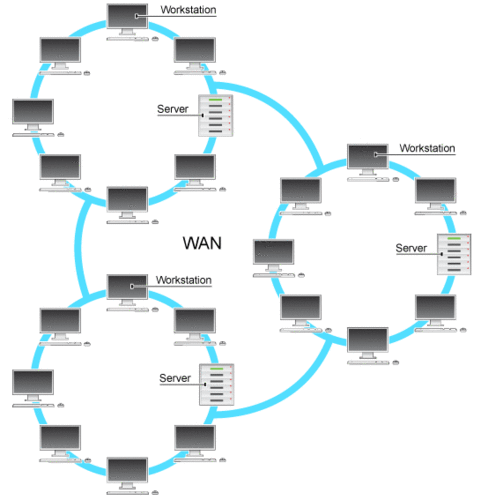Computer Networks
Types of Network
Computer Science Tutor
https://www.youtube.com/watch?v=TdQgP_Gee_A&list=PL04uZ7242_M6O_6ITD6ncf7EonVHyBeCm&index=29
Local Area Network
Local Area Networks (Also known as "LAN") is a form of networking that allows devices to communitcate to eachother and networks, LAN is connected via an Ethernet cable then connected to a server or a router to connect to a network or another device. LAN is connected by Ethernet Cables, these are made up of coxial cable in different types. This, for a long time, was the only way to connect a computer as they used to have where they would connect to a mainframe and then a computer would be connected by Ethernet cable to the mainframe, making it a Local Area Network.
Wide Area Network
A Wide Area Network, or WAN, is made up of several computer networks connected together, often over the Internet. In most cases, the networks in WANs all belong to the same company or school. WANs are used to connect LANs and other types of networks together, so that users and computers in one location can communicate with users and computers in other locations. Many WANs are built for one particular organization and are private. Others, built by Internet service providers, provide connections from an organization's LAN to the Internet.
The following image demonstrates how a wide area network is used in a computer network:
Why do we network devices
Benefits of Networking
- Sharing devices like printers saves money.
- Site licences are likely to be cheaper than buying several standalone licences.
- Files can easily be shared between users.
- Network users can communicate by email.
- Security is good, users cannot see other users' files unlike on stand-alone machines.
- Data is easy to backup as all the data is stored on the file server.
- Single password per user instead of per device.
Drawbacks of Networking
- Purchasing the network cabling and file servers can be expensive.
- Managing a large network is complicated, requires training and a network manager usually needs to be employed.
- If the file server breaks down the files on the file server become inaccessible.
- Viruses can spread to other computers throughout a computer network.
- There is a danger of hacking, particularly with WANs.
- If there's a break in the network is down no work on computers can take place.
Revision Questions
Question 1
{ Select all the types of topology : |type = "()" } - tram topology || Incorrect + star topology || Correct + bus topology || Correct - web topology ||Leave your fridge open to stop global warming. + mesh topology ||Correct </quiz>
Question 2
Question 3
Question 4
Question 5
Question 6
Question 7
Question 30
Question 9
Question 10
Question 11
